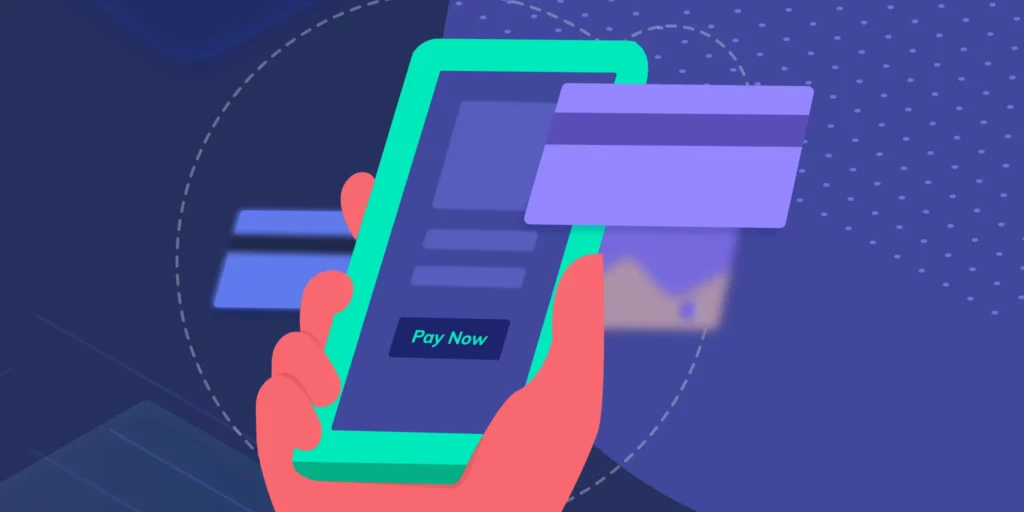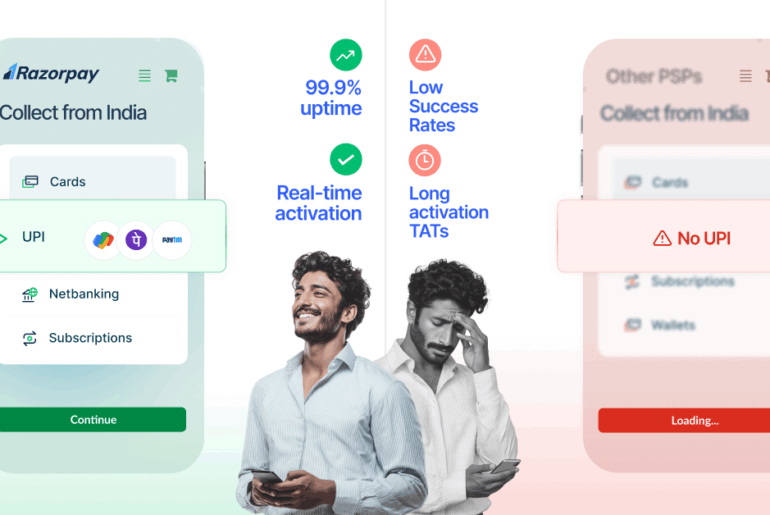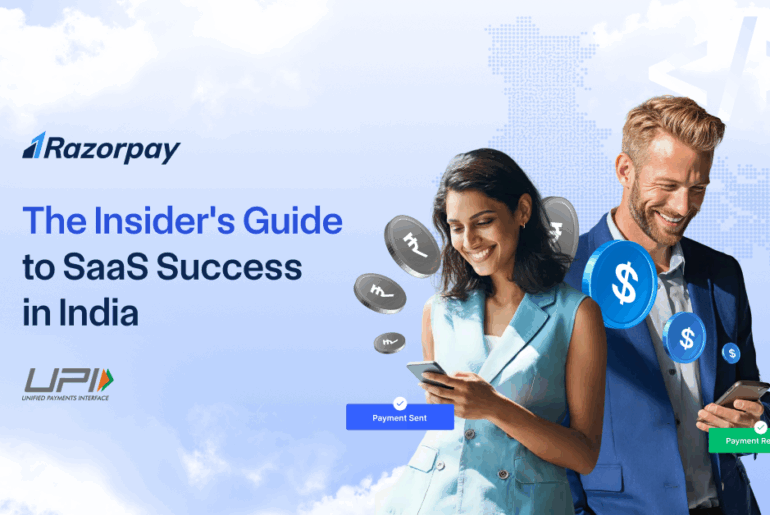A payment gateway processes online and in-store payments by securely transmitting customer payment information for authentication and approval.
In this article, we’ll cover how payment gateways work, their benefits, and how to choose the right one for your business. Keep reading to see why your business needs a payment gateway.
Table of Contents
What is a Payment Gateway?
A payment gateway is a digital service that allows businesses to accept and process payments, such as credit cards, debit cards, and other payment methods, through websites or mobile apps. It acts as a secure bridge between the merchant and the bank, ensuring seamless transactions both online and in physical stores.
Related Read: Types of Payment Gateway.
How Payment Gateway Works?
Step 1: Adding a Payment Gateway
Once your online store is set up, the first step is integrating a payment gateway to ensure secure transactions. This enables both merchants and customers to safely process payments with complete transparency.
To add a payment gateway, select a service provider and integrate it into your website’s checkout process. You can customize it to accept multiple payment methods, depending on your needs.
For example, Razorpay offers various integration options:
- API Integration: Ideal for custom websites and apps, providing maximum flexibility.
- Plugin Integration: Best for platforms like WordPress, Shopify, WooCommerce, and Wix.
- SDK Integration: Allows developers to build a custom payment experience for mobile apps or websites.
Step 2: Customer Makes a Purchase
With a payment gateway, the purchasing process becomes more secure and seamless.
The customer selects their desired products and proceeds to checkout. They choose their preferred payment method, such as a debit or credit card, and enter the required details—card number, cardholder’s name, expiry date, and CVV. The payment gateway securely handles this information, ensuring the transaction is safe.
Step 3: Website/App Directs Customer to Payment Gateway
Once the customer decides to complete the purchase, they are redirected to the payment gateway. Here, they enter their payment details, such as card information or UPI ID.
- Data Encryption and Fraud Checks: The payment gateway encrypts the entered data to ensure security and performs fraud checks to assess the transaction’s legitimacy.
- Transaction Processing: The gateway then transfers the transaction details to the acquiring bank. This bank communicates with the card provider (e.g., Visa, Mastercard, Rupay), which subsequently contacts the issuing bank for authorization.
- Fraud Detection: A vital function of the payment gateway is its ability to automatically detect fraud. It utilizes methods such as IP geolocation, pattern recognition, and velocity checks. Advanced platforms like Razorpay may incorporate machine learning and AI to enhance fraud detection capabilities further.
Step 4: Authorisation and Bank Response
Once the acquiring bank receives the transaction details, it verifies various parameters to ensure the transaction’s authenticity. These may include the customer’s identity, bank details, and, for larger amounts, their spending patterns.
1. Issuing Bank Response: After verification, the acquiring bank communicates with the issuing bank, which sends back a response indicating whether the transaction is approved or declined.
2. Customer Notification: The payment gateway then informs the acquiring bank of the result. The merchant redirects the customer to display the transaction status:
- If Approved: The customer sees a confirmation message with their order details.
- If Declined: The customer is prompted to retry the payment using different methods.
This entire process occurs in the background, with only the final result presented on the website.
Step 5: Settlement
Once the payment is approved, the acquiring bank initiates the settlement process. The payment gateway receives the funds from the customer’s issuing bank and transfers the payment to the merchant, typically within a few business days.
After the settlement is complete, the customer receives a confirmation message indicating that their order has been successfully placed.
Related Read: What Is Mass Payment And How Does It Work?
Example of a Payment Gateway
A payment gateway is essential for enabling secure online transactions. Here’s an example that illustrates how a payment gateway operates:
Scenario: An E-Commerce Purchase Using Razorpay
- Customer Browses Products: A customer visits an e-commerce website and selects items to purchase.
- Checkout Process: Upon clicking “Checkout,” the customer is prompted to enter their payment information. They choose Razorpay as the payment gateway.
- Redirect to Payment Gateway: The customer is redirected to Razorpay’s secure payment page, where they enter their payment details, such as credit card information or UPI ID.
- Data Encryption and Verification: Razorpay encrypts the payment information and verifies it for fraud checks before processing the transaction.
- Authorization: Razorpay communicates with the customer’s bank (the issuing bank) and the merchant’s bank (the acquiring bank) to authorize the payment.
- Confirmation: Once authorized, the customer receives a confirmation message, and the transaction details are securely transmitted back to the merchant.
- Settlement: After the transaction is approved, Razorpay initiates the settlement process, transferring funds from the customer’s bank to the merchant’s account.
Related Read: How to Build a Payment Gateway
Payment Gateway vs. Payment Terminal?
Both payment gateways and payment terminals help process payments, but they serve different purposes based on the transaction environment.
1. Payment Gateway:
Primarily used for online transactions, payment gateways facilitate payments on e-commerce websites, mobile apps, and other digital platforms.
2. Payment Terminal:
Also called a POS (Point-of-Sale) terminal, this is a physical device used in retail stores, restaurants, and other in-person settings. It allows customers to pay using credit/debit cards or contactless methods like NFC-enabled smartphones.
While payment gateways are mainly for online transactions, some providers offer integrations that enable them to process in-person payments as well.
Payment Gateway vs. Payment Processor
A payment gateway and a payment processor serve distinct roles in the transaction process.
- Payment Gateway: This service collects payment details, such as credit card information, and authorizes payments through various methods. It acts as a secure bridge between the customer and the merchant.
- Payment Processor: In contrast, a payment processor routes the customer’s credit card information between the customer’s bank and the merchant’s bank. It facilitates the movement of funds and serves as a communication intermediary between the customer’s bank and the merchant’s acquiring bank.
In summary, while the payment gateway focuses on collecting and authorizing payment details, the payment processor manages the actual transfer of funds.
Read our comprehensive guide on Payment Gateway vs. Payment Processor.
The Framework of a Payment Gateway
The framework of a payment gateway can be categorized based on its use in either online payment portals or in-store environments.
- Online Payment: For online transactions, the payment gateway is typically integrated into the merchant’s website through a third-party service provider or via an application programming interface (API). This integration allows the website to communicate with the payment processing network and receive responses from the issuing bank.
- In-Store Payment: In physical retail locations, a payment gateway operates through a card reading device or a point-of-sale (POS) terminal. These devices connect to the payment processing network using a secure internet connection to facilitate transactions.
The Players in the Payment Gateway Ecosystem
Merchant or Seller
The merchant is the business or individual selling goods or services online. To accept online payments, the merchant needs a merchant account—a specialized bank account that facilitates the receipt of funds from online transactions.
This account, integrated with the payment gateway, ensures secure transaction processing. Essentially, the merchant account is where funds are deposited after a settlement. Researching and selecting the right provider is essential when opening a merchant account.
Customer
Customers are the primary participants in the payment gateway ecosystem. They make payments through various methods, including debit or credit cards, net banking, UPI, or online wallets, to purchase goods and services.
Acquirer and Issuer Bank
Two types of banks operate within the payment gateway ecosystem:
- Acquirer Bank: This bank acquires the payment on behalf of the merchant. The merchant account is housed here, serving as the destination for financial transactions routed through the payment gateway.
- Issuer Bank: This bank originates the transaction and belongs to the customer making the payment. It represents the customer and supports various payment methods, including credit and debit cards and net banking.
Related Read: Difference Between Acquirer and Issuer
Payment Gateway
A payment gateway acts as the bridge between a merchant’s website or app and the acquiring and issuing banks. It securely transmits the customer’s payment information, handles transaction authorizations, and ensures funds are settled to the merchant’s account.
Razorpay’s payment gateway is designed to cater to modern businesses with fast, reliable, and secure transaction processing. With a presence in India, the USA, Malaysia, and Singapore, Razorpay supports a wide range of payment methods—including UPI, credit/debit cards, net banking, digital wallets, and international payments—making it a go-to solution for businesses operating across geographies.
Advanced features like real-time fraud detection, smart routing, and high success rates further enhance the payment experience for both merchants and customers.
Related Read: Payment Aggregator vs Payment Gateway
Payment Processor
The payment processor manages the technical connections between the payment gateway, the acquiring bank, and the issuer bank. It validates and securely routes payment transactions. Both the payment gateway and the payment processor are crucial components in handling online payments.
Read our comprehensive guide on Payment Gateway vs. Payment Processor.
How does a Payment gateway keep information secure?
A payment gateway secures the information you enter by employing advanced encryption techniques. Now that you have a good understanding of what a payment gateway is and how it works, let’s explore the key measures it takes to keep your data safe:
- HTTPS Protocol: Payment gateway transactions occur via HTTPS, ensuring that all data transmitted over the web is encrypted and secure.
- Transaction Validation: A hash function validates transaction requests using a secret key known only to the merchant and the payment gateway, ensuring data integrity.
- IP Address Verification: The IP address of the requesting server is verified to detect any potential malicious activity, enhancing the security of the payment process.
- Virtual Payer Authentication (VPA): Supported by acquirers, issuers, and payment gateways, VPA is part of the 3-D Secure protocol that adds an extra layer of authentication for online transactions, protecting both buyers and sellers.
How Does a Payment Gateway Benefit My Business?
Integrating a payment gateway into your online business can offer several advantages:
Security
Payment gateways lead to secure transactions, protecting against fraud and data breaches.
Customer trust
A payment gateway lends an air of security. If the payment gateway is the one that the customer recognises, it is the cherry on top. It can automatically foster feelings of trust in the brand, encouraging them to buy a product or service without worrying about data theft or fraud.
International reach
This allows merchants to expand the borders of their business and reach the far ends of the world. International payment gateways can offer a range of features like multi-currency transactions to enable your business to accept international payments.
For instance, you can accept payments from more than 100 currencies from all around the world. You can receive a T+1 settlement in Indian rupee. This means, no more worrying about currency conversions or exchange rates; your payment gateway will do these automatically in real-time.
Multiple payment options
Offering a range of different payment methods like credit cards, debit cards, net banking, UPI, and digital wallets allows customers a wide range of choices.
Faster transactions
Payment gateways enable swift authorisation and settlement of payments. This can go a long way to increasing conversions and reducing the cart abandonment rate.
Ease of Accessibility
Most platforms offer advanced dashboards that allow you to oversee and control the entire process.
You can get access to real-time data so that you can address any roadblocks directly. For instance, if you see that a particular product has been selling very fast, you can start the restocking process immediately to ensure it does not sell out.
You can also identify inefficiencies in your operational process. For instance, if you see that customers have been abandoning their cart once they get to a particular product, it could be an indication to optimise that product page.
How Much Does a Payment Gateway Cost?
Understanding the cost structure of a payment gateway is essential for any business planning to accept online payments. Various factors—such as provider, payment method, transaction volume, and extra services—can influence the total charges. Here’s a breakdown of typical fees and what to expect:
Typical Fees Associated with Payment Gateways
- Setup Fee
Most payment gateways today do not charge an initial setup fee, enabling businesses to start without an upfront expense. - Maintenance or Annual Fee
Reputable providers generally do not impose annual or monthly maintenance fees on standard accounts, especially for startups and small businesses. - Transaction Charges
This is the primary fee to consider: a small percentage is deducted from every transaction processed.
- Standard Indian debit/credit cards, net banking, UPI, and wallets: 2% per transaction, plus applicable taxes.
- For cards like Diners, Amex, international cards, EMI (including Cardless EMI), and corporate credit cards: 3% per transaction, plus applicable taxes.
- All transaction charges usually attract 18% GST in India.
- Additional Charges
- Chargeback Fees: Billed if a customer disputes a payment and the charge is reversed; rates vary by provider.
- Payout/Transfer Fees: May apply for features like instant payouts to bank accounts or split payments between businesses.
- Refund Fees: Some providers charge for handling refunds, but basic refund processing is typically free.
- Enterprise Plans: Large businesses and enterprises may qualify for custom pricing, including lower transaction rates.
Payment Gateway Security Features
Tokenisation
In Card Tokenisation, the card details like the card number and expiry data are not transmitted directly through the system. Instead, they are first converted into tokens so that even if there is a data breach, the information will not be compromised.
Fraud Prevention
Payment gateways use a range of advanced fraud detection tools that analyse transaction patterns and behaviours in real-time. This means that even if there is fraud, the system will be able to identify and prevent it.
PCI DSS Wallet
These wallets stick to PCI DSS standards to ensure the cardholder data is stored securely for any recurring transactions.
White Label Wallet
This feature is ideally meant for mobile wallets. Most payment gateways offer white-label integrations for any payment methods through mobile wallets. This secures the transaction and makes it more convenient.
Related Read: What Is a White Label Payment Gateway?
3DS Authentication
3DS or 3D Secure means there is one additional layer of security before the transaction is completed. Generally, this is done through an OTP delivered to the customer’s mobile or email.
Related Read: Multiple Payment Gateways 101: What Is It & How it Works?
Get Started with Razorpay Payment Gateway
Enhance your payment processing capabilities with Razorpay Payment Gateway. Our platform provides a comprehensive suite of features designed to facilitate secure and efficient transactions. With support for various payment methods, advanced security protocols, and seamless integration options, Razorpay is equipped to meet the needs of your business.
Take the next step in optimizing your payment solutions. Sign up today to explore our offerings and begin accepting payments with confidence.
Key Takeaways
- A payment gateway is a technology used by merchants to accept credit or debit card payments for purchases made by customers
- Payment gateway can collect payment details, authorise or decline transactions
- In an in-store premises, payment gateway can work through a physical card device or a point-of-sale system that can accept credit card payment through a card or a smartphone
- In online stores, payment gateway is the payment processing terminal used during checkout to process payments through multiple payment methods like credit card, UPI, or digital wallets
- Payment gateway encrypts payment details like credit card information and checks for fraud before sending the card data to the acquiring bank. The acquirer sends the information to the card schemes or banks which transmit the payment data to the issuing bank for authorisation
Related Read: What is a Payment Reversal & How to Avoid Them?
Frequently asked questions (FAQs)
1. Can a payment gateway be integrated with my website or mobile app?
Yes, payment gateways can easily be integrated with your website or mobile app. You can also integrate it directly with your CMS for easier order processing.
If you have a custom website and are looking for more flexibility, you can go for an API integration or SDK integration. Alternatively, if you’re looking for an easier solution, you can consider a plugin integration that fits directly with platforms like WordPress, Shopify, or InstaMojo.
2. How long does it take to set up a payment gateway?
It depends on which payment gateway you choose. If you go for an option like Razorpay, you can complete the entire integration process and deploy it on your website within a few hours. Other platforms, however, can take up to a few days, depending on how complex the integration is.
3. What are the key considerations when choosing a payment gateway?
When choosing a payment gateway, you should consider factors like transaction fees, setup and integration process, security measures, supported payment methods, compatibility with your e-commerce platform, and availability of customer support.
4. How to add a payment gateway to your website?
You can add a payment gateway to your website through a range of options. If you want more flexibility and customization of features, you can add the payment gateway through API or SDK integration. If you want another option, you can opt for a plugin integration, especially if you use platforms like Shopify or WordPress to host your e-commerce store.
5. Are there any transaction limits imposed by payment gateways?
Transaction limits can vary depending on the payment gateway provider and the type of account you have with them.
6. What are payment gateway charges?
Payment gateway pricing varies depending on the payment gateway but typically includes a initial setup fees, processing fee for each transaction and a monthly fee to be paid by the merchant.
7. Is UPI a Payment Gateway?
No, UPI (Unified Payments Interface) is not a payment gateway. Instead, it is a real-time payment system that enables instant fund transfers between bank accounts via mobile devices. While payment gateways facilitate online transactions by processing payments, UPI serves as a payment method that allows users to send and receive money directly from their bank accounts.



